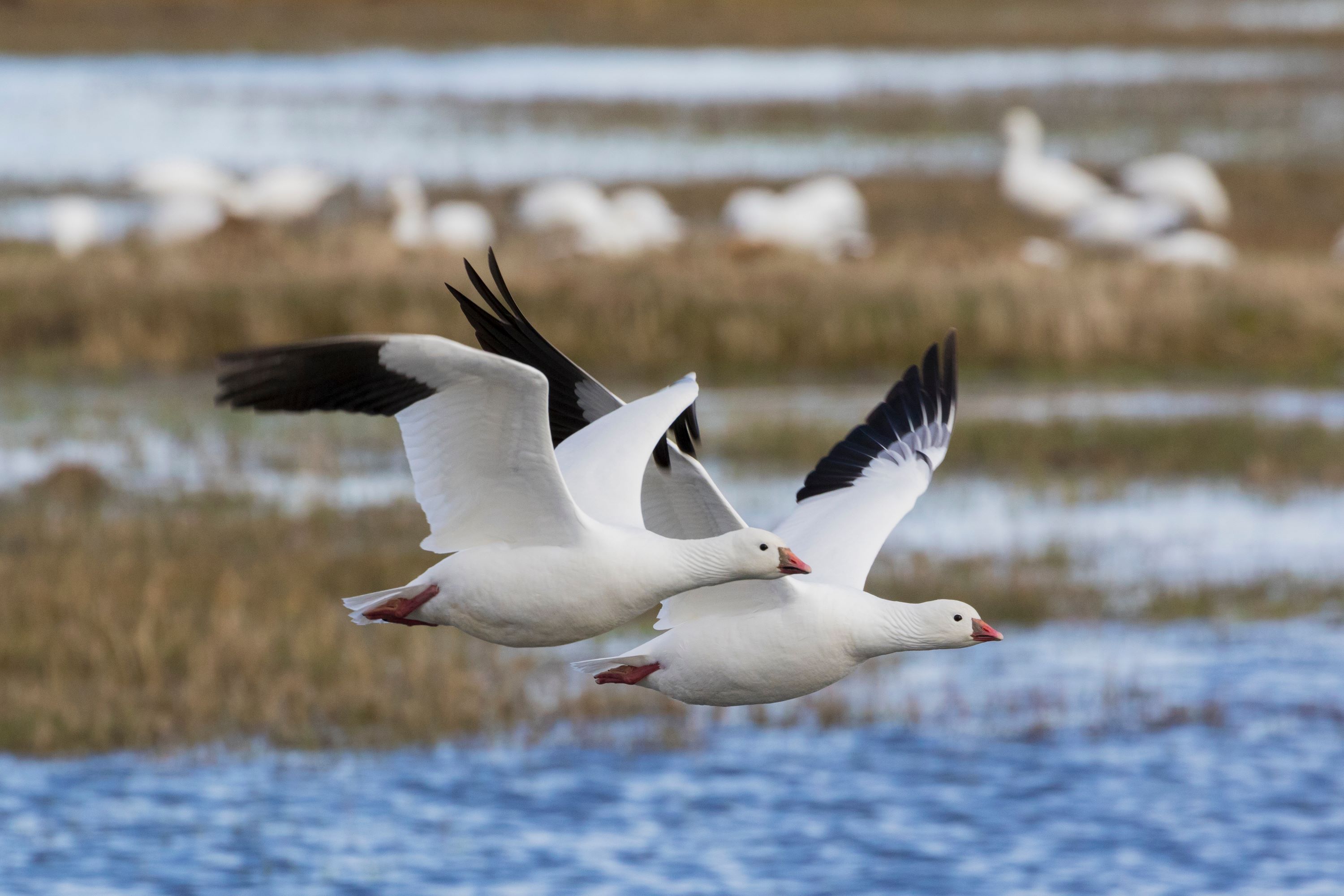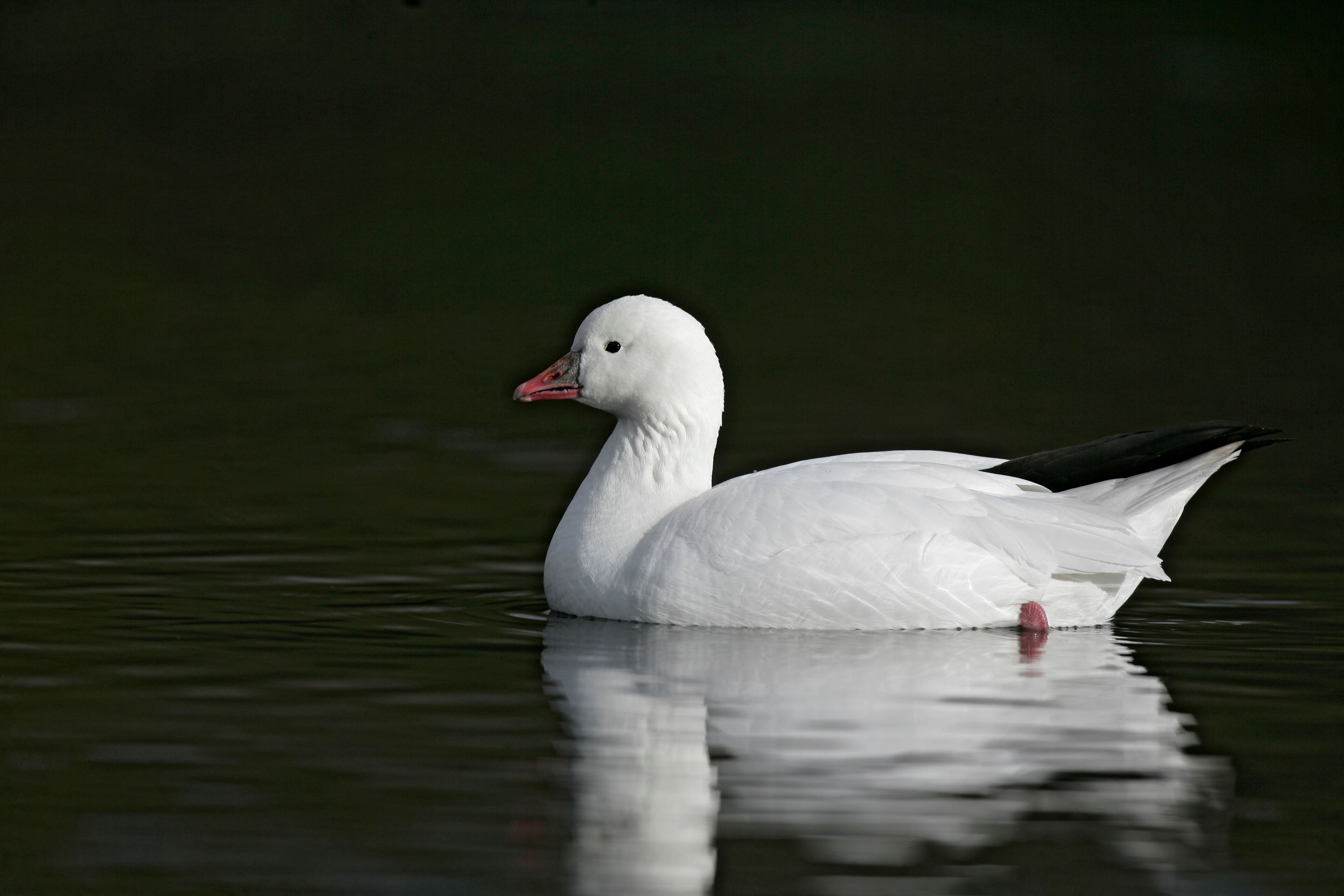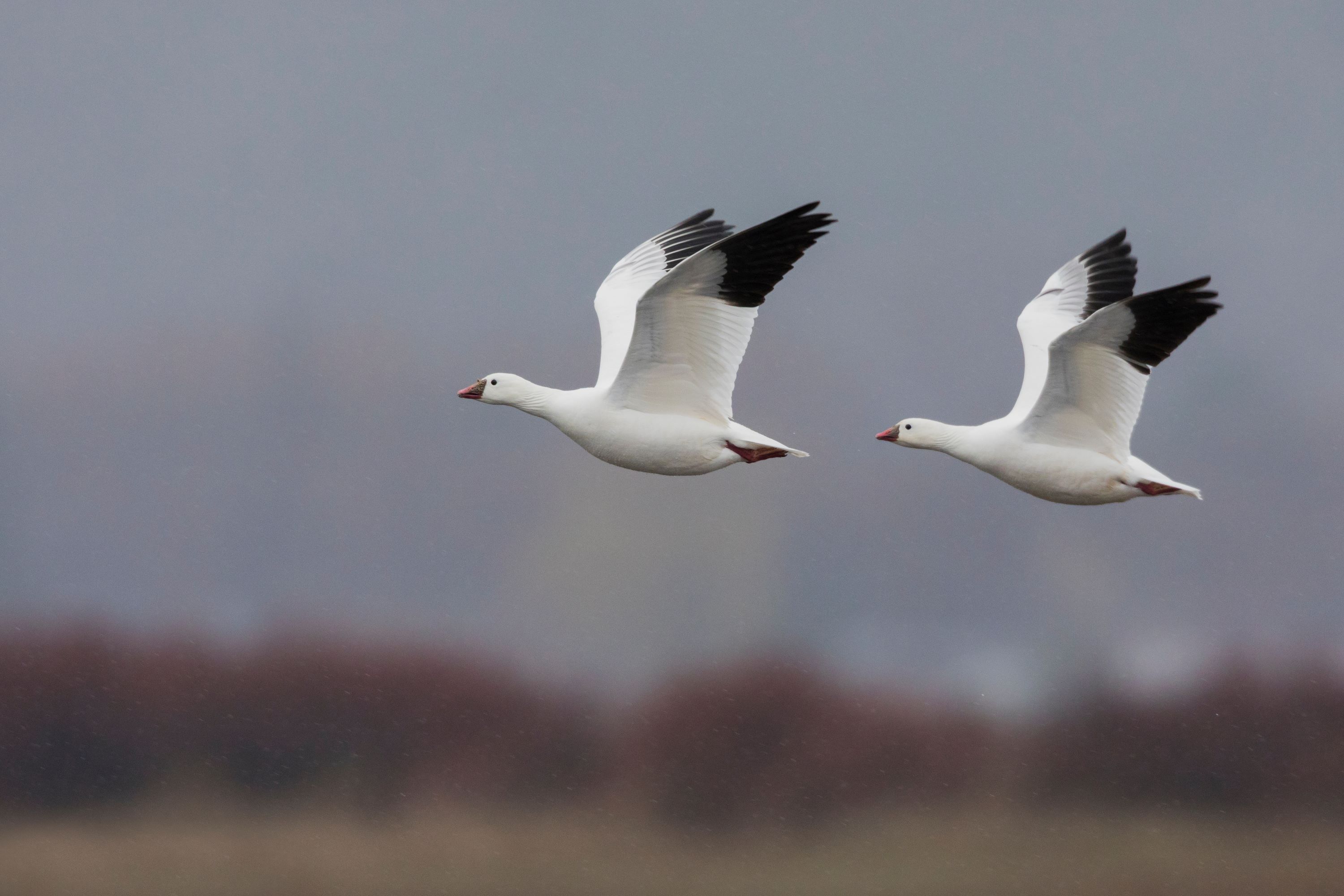
The Ross's Goose: A Delicate Visitor to the Skies
Introduction
The Ross's Goose, a lesser-known yet fascinating species of waterfowl, presents an interesting subject for bird enthusiasts. While not commonly found in Utah, its migratory patterns occasionally bring it into the region, making it a delightful sighting for birdwatchers.
Description and Identification
The Ross's Goose (Anser rossii) is a small white goose, a close relative of the much larger Snow Goose. It is distinguished by its relatively diminutive size, shorter neck, and lack of 'grinning patch' - a black mark found in the mouths of Snow Geese. Its beak is short and stubby, and it sports a gentle, rounded head. In flight, its rapid wing beats and compact body shape make it easily distinguishable from other geese species.
Habitat and Range
Ross's Geese primarily breed in the Arctic regions of northern Canada and migrate to the southern United States for wintering. They favor shallow wetlands, grassy fields, and agricultural lands, where they can find ample food and water. During migration, they often stop in the Central Flyway, occasionally venturing into Utah, where they can be seen in suitable wetland habitats.

Migration Patterns
These geese undertake a long migration twice a year, traveling in large flocks. The migration is a spectacular sight, with V-shaped formations dotting the sky. During these migrations, Ross's Geese can occasionally be seen in Utah, especially in areas where they find suitable stopover habitats.
Behavior and Social Structure
Ross's Geese are social birds, often seen in large flocks that can number in the thousands, especially during migration. They are known for their noisy nature, with a chorus of high-pitched honking. These geese form strong pair bonds, and both parents play a role in raising the young.
Diet and Foraging
The diet of the Ross's Goose is primarily herbivorous, consisting of grasses, sedges, and grains. During migration and wintering, they often forage in agricultural fields, feeding on leftover grains and crops. This foraging behavior sometimes brings them into conflict with farmers.

Breeding and Reproduction
Ross's Geese breed in the high Arctic, where they build nests on the ground, often on slightly elevated sites to avoid flooding. The female lays a clutch of 2-5 eggs, and both parents are involved in the upbringing of the goslings. The young are precocial and are able to leave the nest shortly after hatching.
Conservation Status
Currently, the Ross's Goose is not considered endangered or threatened. However, like many migratory birds, they face challenges such as habitat loss, climate change, and hunting pressure along their migratory routes. Conservation efforts are focused on preserving wetlands and ensuring sustainable hunting practices.
Ross's Goose in Utah
While not a common sight, the Ross's Goose does make appearances in Utah, particularly during migration seasons. Birdwatchers in Utah may spot these geese in wetlands and agricultural fields, often mixed in with flocks of Snow Geese.
Conclusion
The Ross's Goose, with its distinctive appearance and fascinating migratory habits, is a delightful addition to the avian diversity of North America. For birdwatchers in Utah, the occasional sighting of a Ross's Goose adds excitement to their birding adventures, offering a glimpse into the life of this unique and often overlooked species. As with all wildlife, understanding and respecting the Ross's Goose contributes to the broader appreciation and conservation of our natural world.